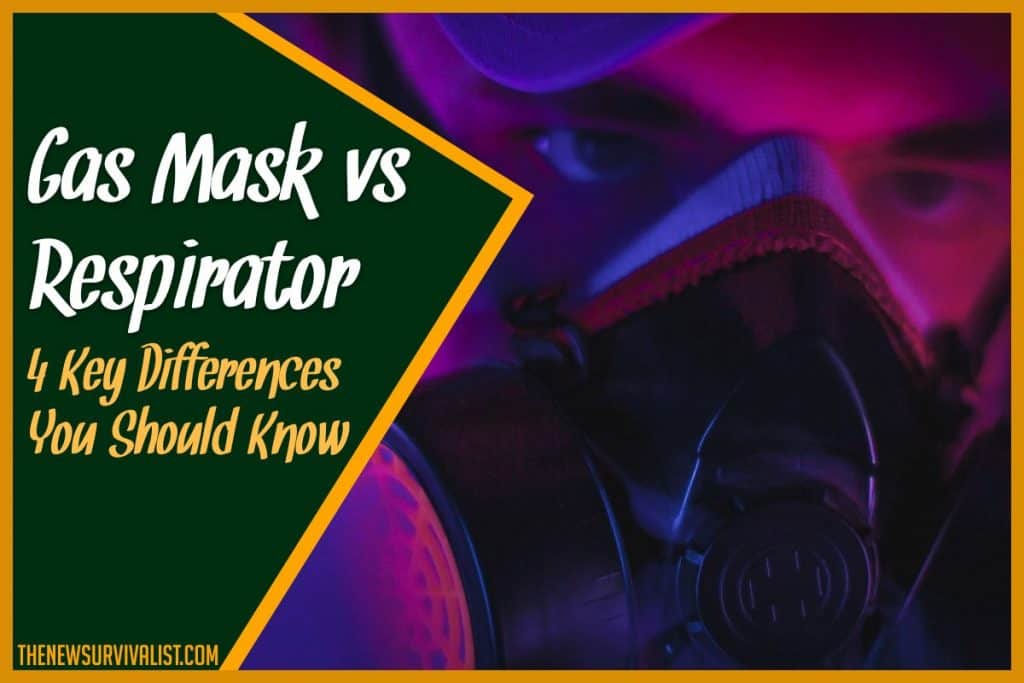Although gas masks are a subtype of a respirator, words and their definition evolve. For the laymen, preppers, and survivalist, the full-face respirator is commonly known and referred to as a gas mask, while a filter that only covers the nose and mouth, and offers partial face protection is referred to as a respirator.
Respirators and gas masks differ in terms of how much one covers the face, what it filters, its size and weight, and its cost.
Gas Mask vs. Respirator
Respirator
- Protection: Half-face, covering the nose and the mouth.
- Filter: Particles, materials that are equal to or more than 0.3 microns in size.
- Size and weight: Small and compact to medium size. Lightweight.
- Cost: Cheaper.
Gas Mask
- Protection: Full-face, or full head protection.
- Filter: All hazardous materials depending on the type of filter installed.
- Size and weight: Bulkier, some types have additional components like a separate air supply. Can be heavy due to additional components, filters, and a portable air supply.
- Cost: Expensive.
The First Gas Mask
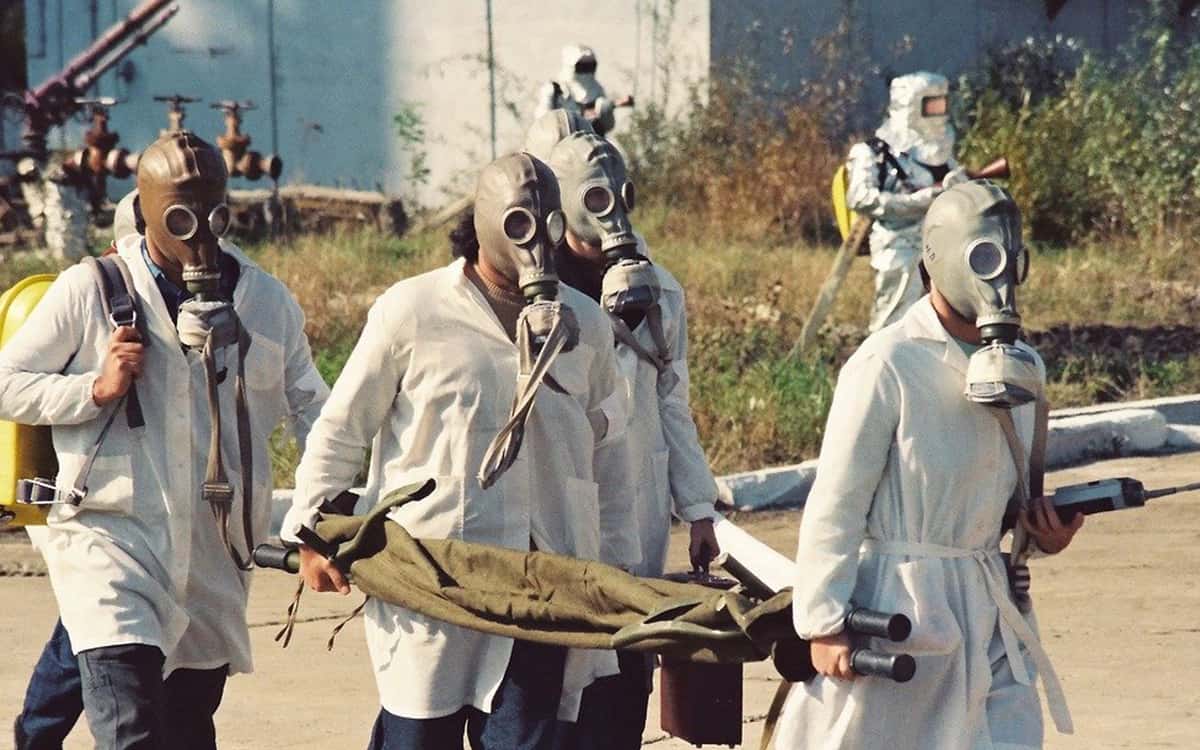
In the 17th century Europe, covering the nose, mouth, and eyes became a part of traditional practices by doctors against contagious diseases. The concept behind these practices was to neutralize the so-called miasma, a vaporous exhalation believed to cause all sorts of bodily harm. It is done by incorporating perfumes, and spices in the tip of the mask where the air comes in. This gave birth to the plague doctor’s bird-like masks.
Types of Respirators
A gas mask is a type of respiratory protector aka a respirator. A respirator is defined as a mask or device worn over the mouth and nose to protect the respiratory system by filtering out dangerous substances. However, in modern culture, the gas mask has been attributed to a full-face respirator that also protects the eyes. It also offers a more complete form of filtering that includes almost all types of hazardous substances, compared to respirators that more commonly only filter particles.
-
Filtering Facepiece Respirators
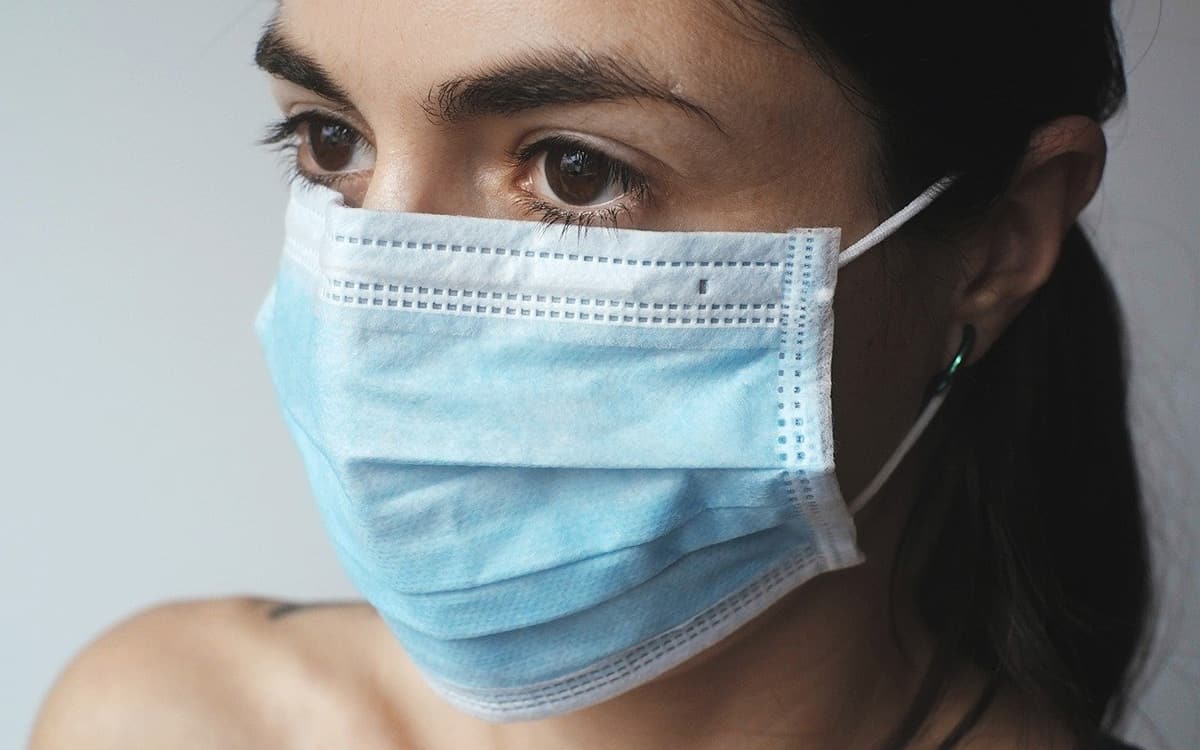
These are disposable half facepiece respirators that filter out particles such as dust, mist, aerosols, bacteria, and some viruses. They do not offer protection against gases and vapors. These includes:
- Dust masks
- DIY masks: wet or dry cloth used to cover nose and mouth, or homemade cloth mask
- Cloth facemasks with filters
- Surgical mask
- N95 up to P100 face masks.
-
Elastomeric Half Facepiece Respirator

These are reusable masks with replaceable cartridges or filters, and covers the nose and the mouth. This type offers protection against particles, gases, and vapors when equipped with the appropriate cartridge or filter. It is often sold in hardware stores and is often used by workers.
Types of Full-Face Respiratory Protection Devices
-
Elastomeric Full Facepiece Respirator (Gas Mask)
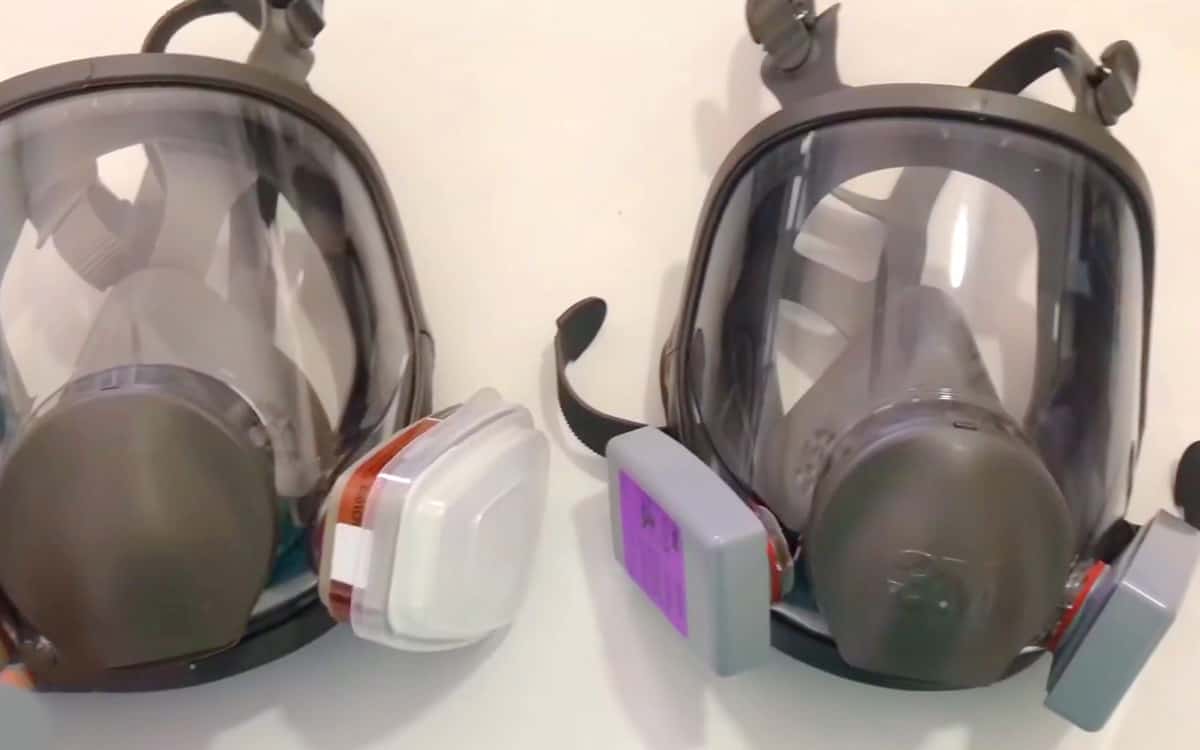
This is similar to the half facepiece respirator but covers the whole face. It protects against particles, gases, and vapors depending on the type of cartridge or filter installed. There are different makes and models out in the market. This is what preppers generally refer to as a gas mask.
-
Powered Air Purifying Respirators (PAPRs)
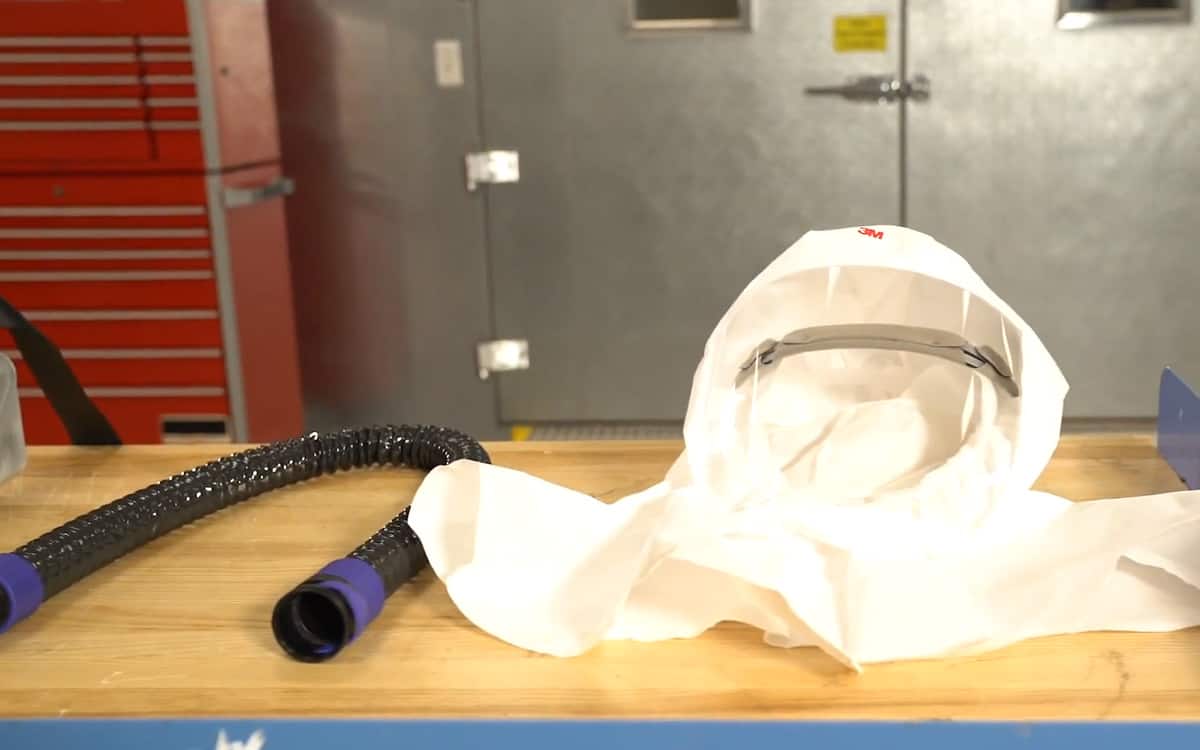
This type of respirator covers the whole head up to the shoulders. It has a battery powered blower that pulls air through an attached filter, canister, or cartridges. It protects against particles, gases, and vapors when equipped with the appropriate filters. It is loose fitting and can be used with facial hair.
-
Supplied Air Respirators (SAR)
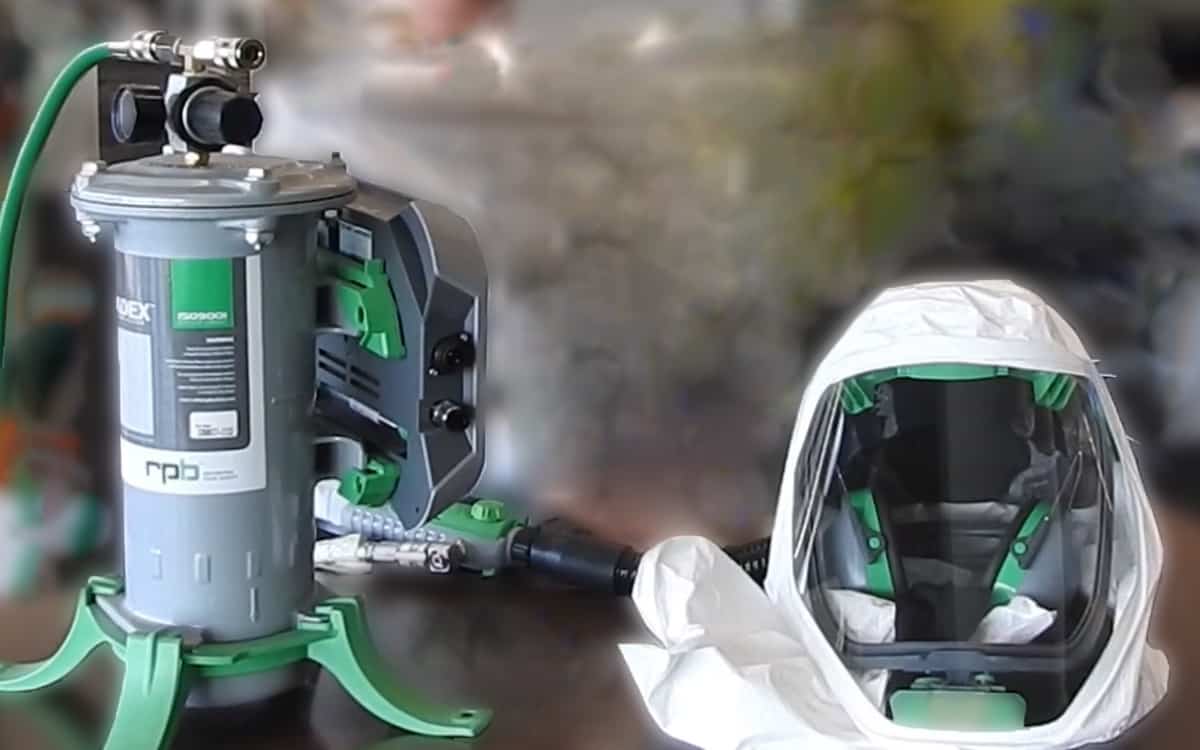
SAR are full face masks that are connected to a hose that supplies clean compressed air from a separate source. The mask has a one-way valve to release exhaled air. This equipment is lightweight and is used while working for extended periods in environments that are not immediately dangerous to life and health (IDLH).
-
Self-Contained Breathing Apparatus (SCBA)
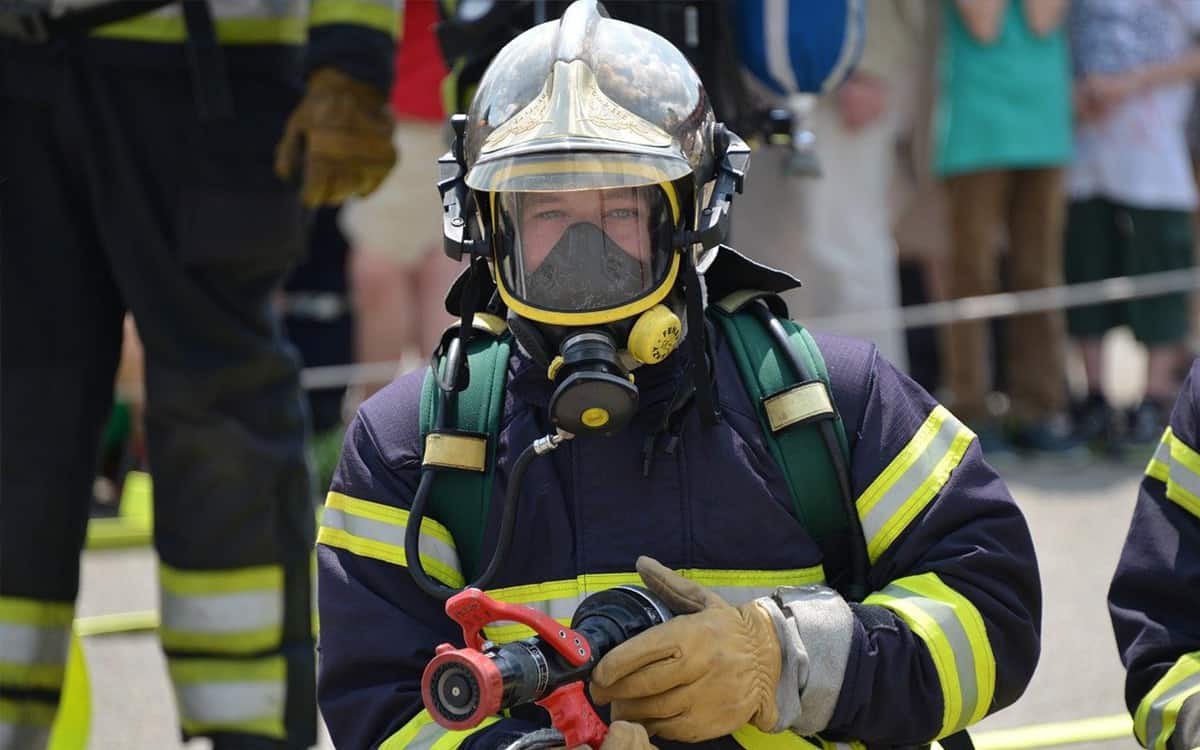
SCBA is used for entry into or escapes from IDLH environment. It comes with a portable oxygen supply, and can either be an open-circuit (OC-SCBA), or a closed-circuit system (CC-SCBA).
OC-SCBA provides air via a high-pressure tank and exhaust exhaled air into the atmosphere. CC-SCBA on the other hand recirculates the exhaled air after the CO2 was filtered out, leaving only the oxygen. This rebreathing mechanism extends its operational time.
The Self-Contained Underwater Breathing Apparatus or SCUBA is a form of SCBA. However, the regular SCBA is not rated for underwater use.
-
Combination Respirators
There are 2 types of combinations used: Supplied Air Respirator + SCBA, and Supplied Air Respirator + PAPRs. The SAR + SCBA has a self-contained air supply if the primary air supply fails. It can be used in an IDLH environment. The SAR + PAPR on the other hand cannot be used in an IDLH due to its non-existent backup air supply.
Filters

Respirator filters are rated depending on how well they filter out a particle size of 0.3 microns (μm), and how well they can resist oil. This is because oil reduces the effectiveness of filters, canisters, and cartridges.
The rating is indicated by the letters N, R, and P, which are no resistance, some resistance, and strong resistance respectively. The popular N95 mask filters 95% of airborne particles but has no resistance to oil. The p100 face mask on the other hand filters 99.97% of airborne particles and is strongly resistant to oil.
Gas masks have a different type of filter and are usually a combination of different neutralizing materials. The filters are color and letter coded depending on the type of hazardous material they can nullify.
- Brown (AX): Gas and vapors of organic compounds (VOC) with a boiling point of <65 o
- Brown (A): Gas and VOCs with a boiling point of > 65 o
- Gray (B): Inorganic gases and vapors like chlorine, hydrogen sulfide, and hydrogen cyanide.
- Yellow (E): Sulphur dioxide, and hydrogen chloride.
- Green (K): Ammonia and organic ammonia derivatives.
- Black (CO): Carbon monoxide.
- Red (Hg): Mercury vapor.
- Blue (NO): Nitrous gases including nitrogen monoxide.
- Orange (Reactor): Radioactive iodine, including radioactive methyl iodide.
- White (P): Particles (>0.3 microns)
They are also rated depending on how well they work based on the saturation of suspended material measured in parts per million (PPM).
- Class 1 filters 1,000 PPM.
- Class 2 filters up to 5,000 PPM.
- Class 3 filters up to 10,000 PPM.
A filter marked with A2B2E2K2P3 will have:
- A2: Class 2 filter for gas and VOC with > 65 oC boiling point.
- B2: Class 2 filter for inorganic gases.
- E2: Class 2 filter for sulfur dioxide, and hydrogen chloride.
- K2: Class 2 filter for ammonia.
- P3: Class 3 filter for particles.
On top of all of this, a more compact rating is also used in labels to indicate in which situation the filter can be used:
- CBRN – Chemical, biological, radioactive and nuclear
- CBRCA – Chemical blowing and riot control agents
- NBC – Nuclear, biological, chemical
Particle Sizes of Hazardous Materials
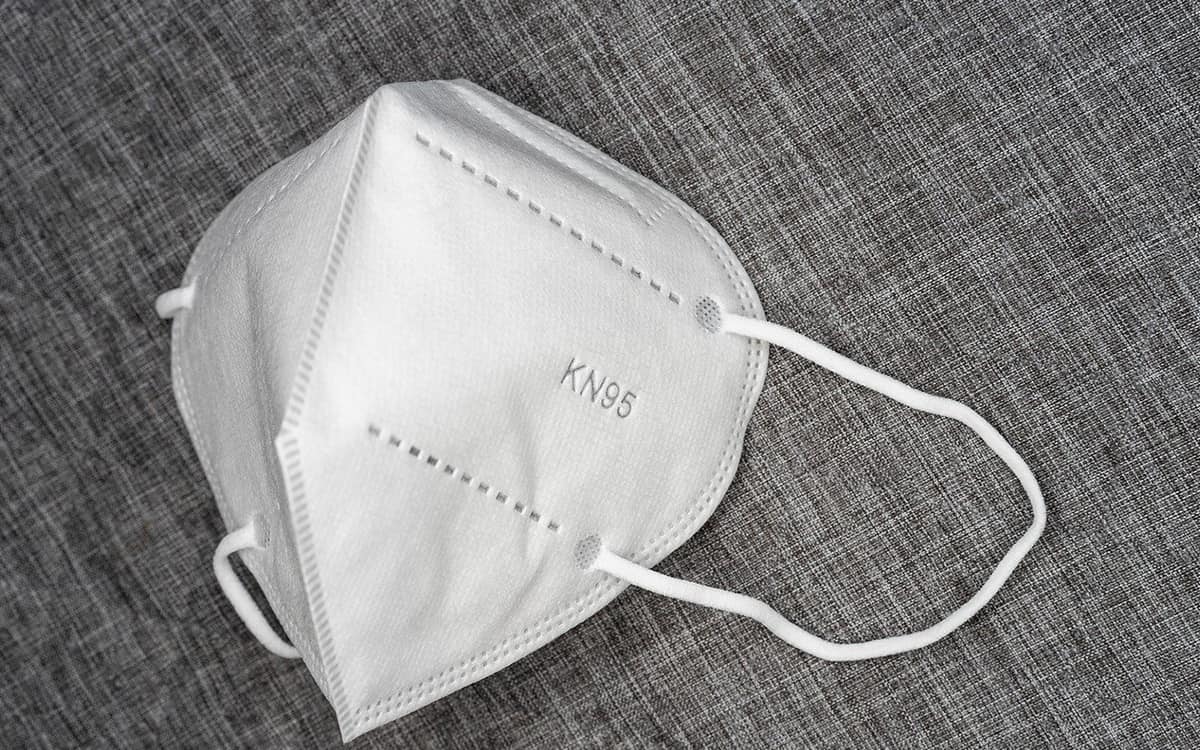
Preppers and survivalists should know the different particle sizes of hazardous materials. This is so when SHTF, the appropriate respiratory protection device can be used, without going overboard. During this time, supplies are limited, and the improper use of a filter is too costly.
Particles are anything that is 0.3 microns or more in size. These include bacteria, some viruses, aerosols, droplets, and dust. For SHTF like a volcanic eruption or a pandemic, an N95 mask is sufficient to block both the volcanic ash and microorganisms from getting inhaled.
Gases, volatile organic and inorganic compounds, and chemical vapors are measured in nanometers (nm). 1nm = 0.001 micron. This is why respirators are useless in blocking these types of hazardous materials.
Gas mask filters also fail to block these substances. However, they work by purifying the air through chemical reactions that nullify the dangerous compounds. One such material used in these filters is activated carbon which adsorbs the harmful chemicals in the air. During WWI, armies used gas masks containing chemicals that reacted with chlorine to combat the use of chlorine gas.
Which Type to Use and When?
Prepping enough supplies and materials for when SHTF can be a challenge. A good prepper should know which respiratory protection to use and for how long you it remains effective.
Respirators, in general, should be used in cases of natural calamities, to prevent inhalation of dust particles, and prevent the spread of contagious diseases.
Gas masks on the other hand should only be used in situations that are immediately dangerous to life and health. This includes biological, chemical, and nuclear attacks. For the best protection, it should be used in conjunction with a hazmat suit.

